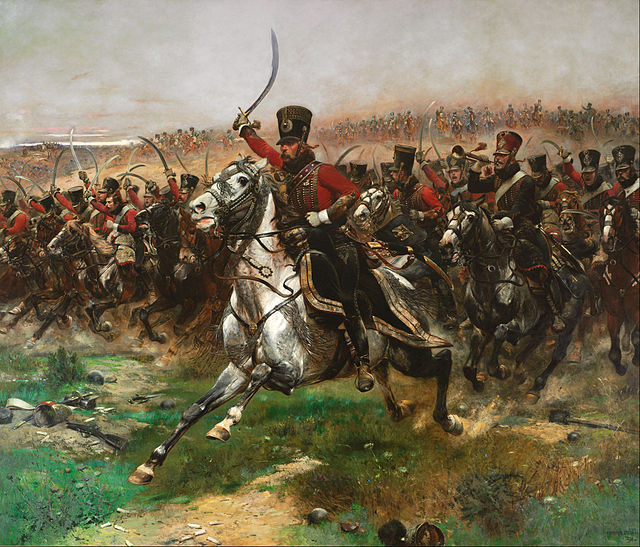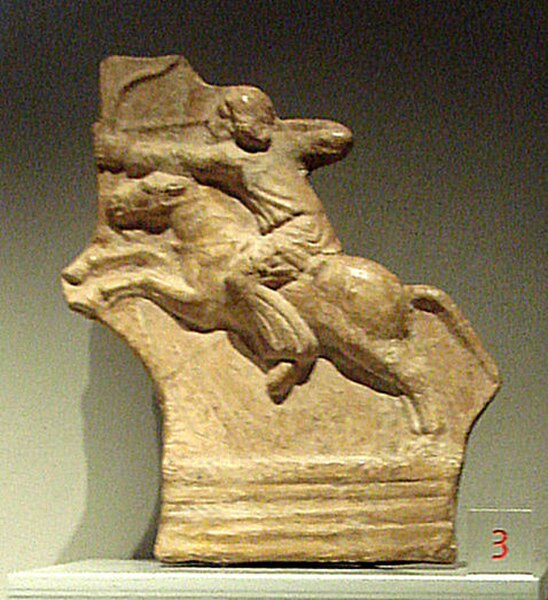Heavy cavalry was a class of cavalry intended to deliver a battlefield charge and also to act as a tactical reserve; they are also often termed shock cavalry. Although their equipment differed greatly depending on the region and historical period, heavy cavalry were generally mounted on large powerful warhorses, wore body armor, and armed with either lances, swords, maces, flails (disputed), battle axes, or war hammers; their mounts may also have been protected by barding. They were distinct from light cavalry, who were intended for raiding, reconnaissance, screening, skirmishing, patrolling, and tactical communications.
Ottoman Sipahi heavy cavalry, c. 1550
Early 16th-century French gendarmes, with complete plate armour and heavy lances
Spanish Heavy Cavalry – Royal Armoury of Madrid, Spain
The oldest known relief of a heavily armoured cavalryman, from the Sasanian Empire, at Taq-i Bostan, near Kermanshah, Iran (4th century)
Historically, cavalry are soldiers or warriors who fight mounted on horseback. Until the 20th century cavalry were the most mobile of the combat arms, operating as light cavalry in the roles of reconnaissance, screening, and skirmishing in many armies, or as heavy cavalry for decisive shock attacks in other armies. An individual soldier in the cavalry is known by a number of designations depending on era and tactics, such as a cavalryman, horseman, trooper, cataphract, knight, drabant, hussar, uhlan, mamluk, cuirassier, lancer, dragoon, or horse archer. The designation of cavalry was not usually given to any military forces that used other animals for mounts, such as camels or elephants. Infantry who moved on horseback, but dismounted to fight on foot, were known in the early 17th to the early 18th century as dragoons, a class of mounted infantry which in most armies later evolved into standard cavalry while retaining their historic designation.

French 4th Hussars at the Battle of Friedland, 1807
Assyrian cavalry
Parthian horseman, now on display at the Palazzo Madama, Turin
Warrior's departure; an Athenian amphora dated 550–540 BC








